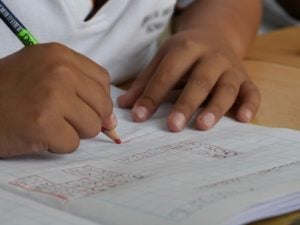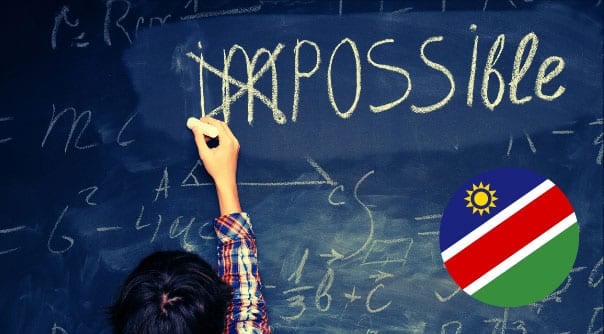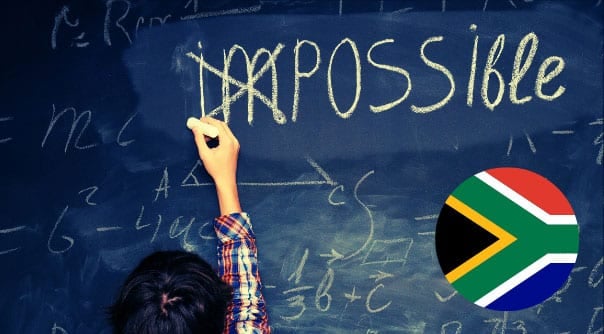 Dear Susan
Dear Susan
My son is in 2nd grade. According to his teacher his reading and spelling ability is on par but he struggles with writing. His teacher says his gross and fine motor skills are poorly developed and this is affecting his speed, even in math class. The problem is, I am a single parent with no health insurance and have to stretch to make ends meet. We might be better off next year. Until such time, I would appreciate some help in this regard.
Thanking you in advance.
Tomi
.
.
Dear Tomi
Motor skills are movements and actions of the muscles. Typically, they are categorized into two groups: gross motor skills and fine motor skills.
.
.
These two motor skills work together to provide coordination.
Let’s first investigate gross motor skills…
Gross motor skills not only good for sports
Many parents think that having good gross motor skills can enable a child to excel at sports. This is only part of the benefit! Developing your child’s gross motor skills can do so much more than that – they can influence a child’s ability to write well and even to concentrate in the classroom.
Efficient control of the larger muscle groups in the neck, shoulder and trunk is necessary to maintain stability in order for the fingers and hands to move to complete the handwriting task. As children develop, control and stability begins at the trunk, progressing to the elbow, wrist and finally the hand. With normal development, fine motor skills are developed from gross motor skills. For example, a baby will first learn to swat, then reach, then grasp and then manipulate a toy. Children need to develop the proximal muscles (closer to the center of the body) of the trunk and shoulder girdle in order to use the distal muscles (further from the center of the body) in the fingers and hands. These proximal muscles develop in children with gross motor movements such as reaching, tummy time, rolling, all fours position, crawling, standing and walking.
Taking part in gross motor activities can also help your child develop the physical endurance needed to sit at a desk for extended periods of time, aiding his concentration.
The key is practice, practice, practice
Gross motor skills develop through practice and repetition, and therefore children need to be exposed to diverse opportunities to move freely and experiment with different resources to help their skills develop.
In her book Learning Disabilities, the late professor Janet Lerner explains that gross motor activities involve the total musculature of the body and the ability to move various parts of the body on command, controlling body movements in relationship to various outer and inner elements, such as gravity, laterality, and body midlines.
She lists many activities intended to develop smoother, more effective body movements and to increase the child’s sense of spatial orientation and body consciousness, and groups motor activities into walking activities, balance beam activities, and other awareness activities:
Walking activities
- Forward walk. Have the child walk to a target goal on a straight or curved path marked on the floor. The path may be wide or narrow, but the narrower the path, the more difficult it is to do the tasks. A single line requiring tandem walking (heel-to-toe) is more difficult than a wide path. A slow pace is more difficult than a running pace. Walking without shoes and socks is more difficult than with shoes.
- Backward walk. Have the child walk through the same course backward.
- Variations. Have the child walk the above with arms in different positions, carrying objects, dropping objects, dropping objects such as balls into containers along the way, or focusing eyes on various parts of the room.
- Animal walk. Have the child imitate the walk of various animals: elephant walk (bend forward at the waist, allowing arms to hang down, taking big steps while swaying from side to side); rabbit hop (placing hands on the floor, do deep knee bends and move feet together between hands); crab walk (move sideways to the left and right, on hands and feet, face up); duck walk (walk with hands on knees while doing a deep knee bend); and inchworm walk (with hands and feet on the floor, take small steps first with feet, then with hands).
- Stepping stones. Put objects on the floor as stepping stones, identifying placement of left foot and right foot by colors. The child is to follow the course by placing the correct foot on each stepping stone.
- Hoop walk. Place hoops on the ground. Have the child walk between the hoops forward and backward and then hop through the hoops.
- Box game. The child has two boxes (the size of a shoe box), one behind and one in front. The child steps into the front box with both feet, moves the rear box to the front, and then steps into that. The child can use different hands to move the boxes and use alternating feet.
.
Balance beam activities
The balance beam can be a flat board, either purchased or homemade. It can be of various widths; the narrower the width, the more difficult it is to do the activities. Each end of the board is fitted into a bracket that serves as a brace and prevents the board from tipping over.
- Walking forward. Have the child walk forward slowly along the board with the normal stride of a tandem walk (heel-to-heel). The task is more difficult with bare feet than with shoes on.
- Walking backward. Have the child walk backward along the board while keeping balance.
- Sideways walking. Ask the child to walk along the board sideways starting with the left foot, then the right. One foot could slide towards the other, or lift and cross over the other.
- Variations. More complex variations can be devised by adding activities such as turning, picking up objects on the board, kneeling, dropping objects such as balls or bean-bags into containers while going across, following oral or recorded commands while on the board, or walking while blindfolded, or with eyes focused on an object.
.
Other gross motor activities
- Skateboard. The child can ride the skateboard lying on the stomach, kneeling or standing; and the surface can be flat or a downhill slope.
- Balance board. This is a square board placed on a block-shaped piece of wood. Unless the weight of the body is correctly distributed, the board will tilt to one side.
- Jumping jacks. Have the child jump, putting feet wide apart, while clapping the hands above the head. To vary this activity, the child can make quarter-turns, half-turns, and full turns, or jumps to the left, right, forward and backward.
- Hopping. The child should hop on one foot at a time and alternate feet while hopping. The child should hop in rhythmical patterns: left, left, right, right; or left, left, right – right, right, left.
- Bouncing. Have the child bounce on a trampoline, bedspring, mattress, or a large truck tire tube.
- Skipping. A difficult activity for the child with poor motor coordination, it combines rhythm, balance, body movement, and coordination. Many children need help to learn to skip.
- Play hopscotch. Visit //www.wikihow.com/Play-Hopscotch to learn the rules of this classic game.
.
Fine motor skills
Fine motor skills, on the other hand, are the smaller movements and coordination that occur in the wrists, hands, fingers, feet and toes. They participate in smaller actions such as picking up objects between the thumb and finger, writing carefully, and even blinking.
Fine motor skills are essential for performing everyday skills like self-care tasks (e.g. clothing fastenings, opening lunch boxes, cleaning teeth, using cutlery) and academic skills (e.g. pencil skills of drawing, writing and coloring, as well as cutting and pasting). Without the ability to complete these everyday tasks, a child’s self-esteem can suffer and their academic performance is compromised. They may also be unable to develop appropriate independence in life skills (such as getting dressed and feeding themselves).
Although some children do well at gross motor activities, their performance of fine motor activities may be poor.
Building blocks necessary to develop fine motor skills
What are the building blocks necessary to develop fine motor skills? According to the website Childdevelopment.com.au they are as follows:
- Bilateral integration: Using two hands together with one hand leading (e.g. opening a jar lid with hand while the other hand helps to by stabilizing the jar).
- Crossing the mid-line: The ability to cross the imaginary line running from a child’s nose to pelvis that divides the body into left and right sides.
- Hand and finger strength: An ability to exert force against resistance using the hands and fingers that allows the necessary muscle power for controlled movement.
- Eye-hand coordination: The ability to process information received from the eyes to control, guide and direct the hands in the performance of a task such as handwriting.
- Hand dominance: The consistent use of one (usually the same) hand for task performance which allows refined skills to develop.
- Hand division: Using just the thumb, index and middle finger for manipulation, leaving the fourth and little finger tucked into the palm not participating but providing stability for the other three fingers.
- Object manipulation: The ability to skilfully manipulate tools (such as the ability to hold and move pencils and scissors with control) and the controlled use of everyday tools such as a toothbrush, hairbrush, and cutlery.
- Body awareness: Information that the brain receives from our muscles and joints to make us aware of our body position and body movement, so we can accurately control our movements.
.
How can I tell if my child has problems with fine motor skills?
If a child has difficulties with fine motor skills they might:
- Have an awkward or immature pencil grasp for their age.
- Have poor handwriting; their writing may be messy, slow or laborious.
- Fatigue quickly when typing or using a mouse on a computer.
- Have difficulty when using scissors.
- Have difficulty performing precise manipulation tasks, for example using a spoon or fork, buttoning their clothes, or tying shoelaces.
- Have difficulty performing age appropriate self-care tasks independently.
- Tire easily when engaging in fine motor tasks.
.
Fine motor activities
Professor Janet Lerner lists many activities intended to fine motor skills and groups them into (1) throwing and catching activities and (2) eye-hand coordination activities.
Throwing and catching activities
- Throwing: In throwing objects at targets to the parent, the child can use balloons, wet-sponges, bean-bags, yarn balls, and rubber balls of various sizes.
- Catching: Catching is a more difficult skill than throwing, and the child can practise catching the above objects thrown by the parent.
- Ball games: Many ball games help in the development of motor coordination. Playing balloon volleyball or rolling ball games, bouncing balls on the ground, and throwing balls against the wall are some examples.
- Tire tube games: Old tire tube games provide good objects for games of rolling and catching.
- Rag ball: Many children find that throwing and catching a rubber ball is too difficult a task. Initially, a rag ball can be used. It can be made by covering rags or discarded nylon hosiery with cloth.
.
Eye-hand coordination activities
- Tracing: Have the child trace lines, pictures, designs, letters, or numbers on tracing paper, plastic, or stencils. Use directional arrows, color cues, and numbers to help them trace the figures.
- Water control: Ask the child to carry and pour water into measured buckets from pitchers to specified levels. Use smaller amounts and finer measurements to make the task more difficult. Coloring the water makes the activity more interesting.
- Cutting with scissors: Have the child cut with scissors, choosing activities appropriate to their needs. The easiest task is cutting straight lines marked near the edges of paper. The child should also be asked to cut straight lines across the center of the paper. Some might need a piece of cardboard attached to the paper to guide the scissors. Have the child cut out marked geometric shapes, such as squares, rectangles and triangles. You can draw lines in different colors to indicate changes of direction in cutting. Have the child cut out curving lines and circles, then pictures, and finally patterns made with dots and faint lines.
- Stencils or templates: Have the child draw outlines of patterns of geometric shapes. Templates can be made from cardboard, wood, plastic, old x-ray films, or containers for packaged meat. Two styles can be made: a solid shape or frames with the shape cut out.
- Lacing: A piece of cardboard punched with holes or a pegboard can be used for this activity. A design or picture is made on the board and the child follows the pattern by weaving or sewing through the holes with a heavy shoelace, yarn, or cord.
- Paper and pencil activities: Coloring books and dot-to-dot books frequently provide good paper pencil activities for fine motor and eye-hand development.
- Jacks: The game of jacks helps develop eye-hand coordination, rhythmical movements, and fine finger and hand movements. Visit https://www.youtube.com/watch?v=OwmCInS2pIM to learn the rules.
- Clipping clothespins: Clothespins can be clipped on to a line or a box. The child can be timed in this activity by counting the number of clothespins clipped in a specified time.
- Copying designs: The child looks at a geometric design and copies it onto a piece of paper.
.
Regards,
Susan
.
Tips for sending questions
Send your questions to [email protected].
Try to give as much detail as possible when sending your questions. Include your child’s age and grade and the specific problems that you have noticed, which concern you.
Sign your letter to Susan with your first name only, or a pseudonym if you prefer. Your identity remains private and we will not publish your contact details.
More about Susan
Susan is an educational specialist in the field of learning problems and dyslexia and has a B.A. Honors in Psychology and B.D. degree. Early in her professional career Susan was instrumental in training over 3,000 teachers and tutors, providing them with the foundational and practical understanding to facilitate cognitive development amongst children who struggle to read and write. With over 30 years of research to her name Susan conceptualized the Edublox teaching and learning methods that have helped thousands of children who were struggling academically to read, learn and achieve. In 2007, Susan opened the first Edublox reading and learning clinic and now there are 40 Edublox clinics internationally. Her proudest moments are when she sees a child who had severe learning difficulties come top of their class after one or two years at Edublox. Susan always takes time to collect the ‘hero’ stories of learners whose self-esteem is lifted as their marks improve.


